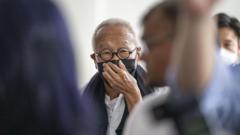The end of daylight saving time arrives this Sunday at 2 a.m. local time, allowing most of America to set their clocks back an hour and relish in an extra hour of sleep. However, as we embrace this chance to rest, there are important health considerations to be aware of related to our natural body clocks.
As the clocks shift, the question arises: how does this transition affect our health? Research indicates that changing clocks can disrupt our circadian rhythms—the internal clocks that regulate cycles of sleep and wakefulness. Health experts from institutions like Stanford University emphasize that shifting back and forth between daylights saving time and standard time can have detrimental effects on various bodily systems.
Jamie Zeitzer, co-director of Stanford’s Center for Sleep and Circadian Sciences, likens the master clock of the brain to a conductor leading an orchestra. Each organ acts as an instrument, responding to light and darkness to maintain harmony.
As daylight saving time ends, there will be more morning light but less evening light. This is pivotal for resetting our circadian rhythms. Studies have shown that enhanced exposure to morning light can bolster our alignment with natural cycles, enhancing not just sleep but a wide array of health factors, including metabolic processes and heart health.
Interestingly, while many welcome the return to standard time, it’s worth mentioning the health groups advocating for the abolition of the biannual clock changes altogether. They argue that maintaining a consistent standard time year-round may serve public health better, minimizing disruptions to our well-being.
To ease into the time change, adjusting bedtimes incrementally over the days leading up to the switch can help. Exposure to morning light is crucial. For those unable to go outdoors, sitting near windows can provide the necessary light exposure.
The transition back to standard time serves as a reminder of the delicate balance between our biological clocks and social obligations, and prompts an ongoing discussion about the future of timekeeping in the U.S. Amidst proposals for permanent daylight saving time, one thing is clear: our health must remain a priority in these discussions.

















